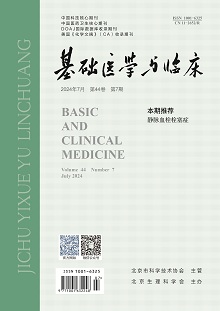Effect of rosiglitazone on serum changes of ox-LDL, ET and NO in type 2 diabetes rat.
2012, 32(9):
1093-1094.
 Asbtract
(
1092 )
Asbtract
(
1092 )
 PDF (317KB)
(
626
)
Related Articles |
Metrics
PDF (317KB)
(
626
)
Related Articles |
Metrics
Objective: To develop a rat model with the metabolic abnormalities of type 2 diabetic mellitus. To study the changes of serum changes of ox-LDL, ET, NO and the relashionship among them. And to observe intervention effect of rosiglitazone. Methods: 80 male Wistar rats were randomized to control group, high fat diet group, diabetes group, and rosiglitazone treatment group (diabetes plus rosiglitazone treatment). Type 2 diabetes models were developed and rosiglization group was treated with rosiglitazone. After 6 weeks and 12 weeks of treatment with rosiglitazone, rats were sacrificed and blood sample were collected. Blood glucose, fat, insulin, oxided low density lipoprotein, endothlin and nitric oxide were tested. Data were compared among the four groups. Data of 6 week and 12 week were compared in each group itself. Results: 1. At 6 week and at 12 week, compared with control group, blood glucoses, lipid profile and fasting inuslin of high fat diet group, diabetes group and rosiglitazone group were increased significantly. 2. Compared with control group, ox-LDL in high fat diet group, diabetes group and rosiglitazone group increased significantly at 6 week. At 12 week, ox-LDL in diabetes group increased significantly than that of control group. Compared with that at 6 week, ox-LDL at 12 week in high fat diet group increased significantly. 3. Compared with control group, endothelin in high fat diet group, diabetes group and rosiglitazone group increased at 6 week and 12 week. And endothelin in diabetes group was higher than that in high fat diet group and rosiglitazone group at 12 week. 4. Compared with control group, nitric oxide in high fat diet group, diabetes group and rosiglitazone group decreased at 6 week and 12 week. And nitric oxide in diabetes group was lower than that in high fat diet group and rosiglitazone group at 12 week. Conclusion: 1. There are more aggravated glucose and lipid metabolic disorder in diabetes group than in high-fat diet group, and all of these are aggravated gradually with the prolongation of time. 2. Both in diabetes group and in high-fat group, the level of ox-LDL and endothelin are increased, while NO is decreased gradually with time prolongation. 3. Rosiglitazone can improve the glucose and lipid metabolic disorder and insulin resistance in type 2 diabetes rats in some degree. And it can also decrease the atherosclerosis factors, such as ox-LDL, ET, and correct the imbalance of NO/ET.


